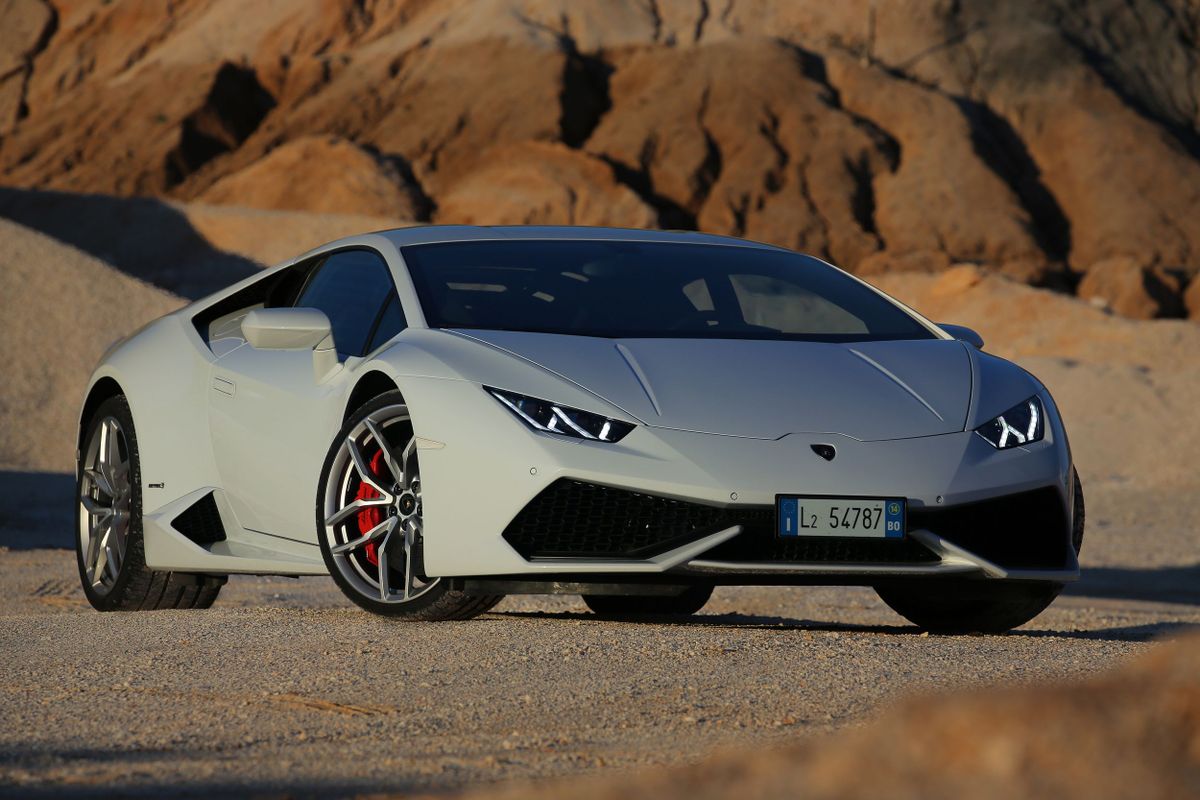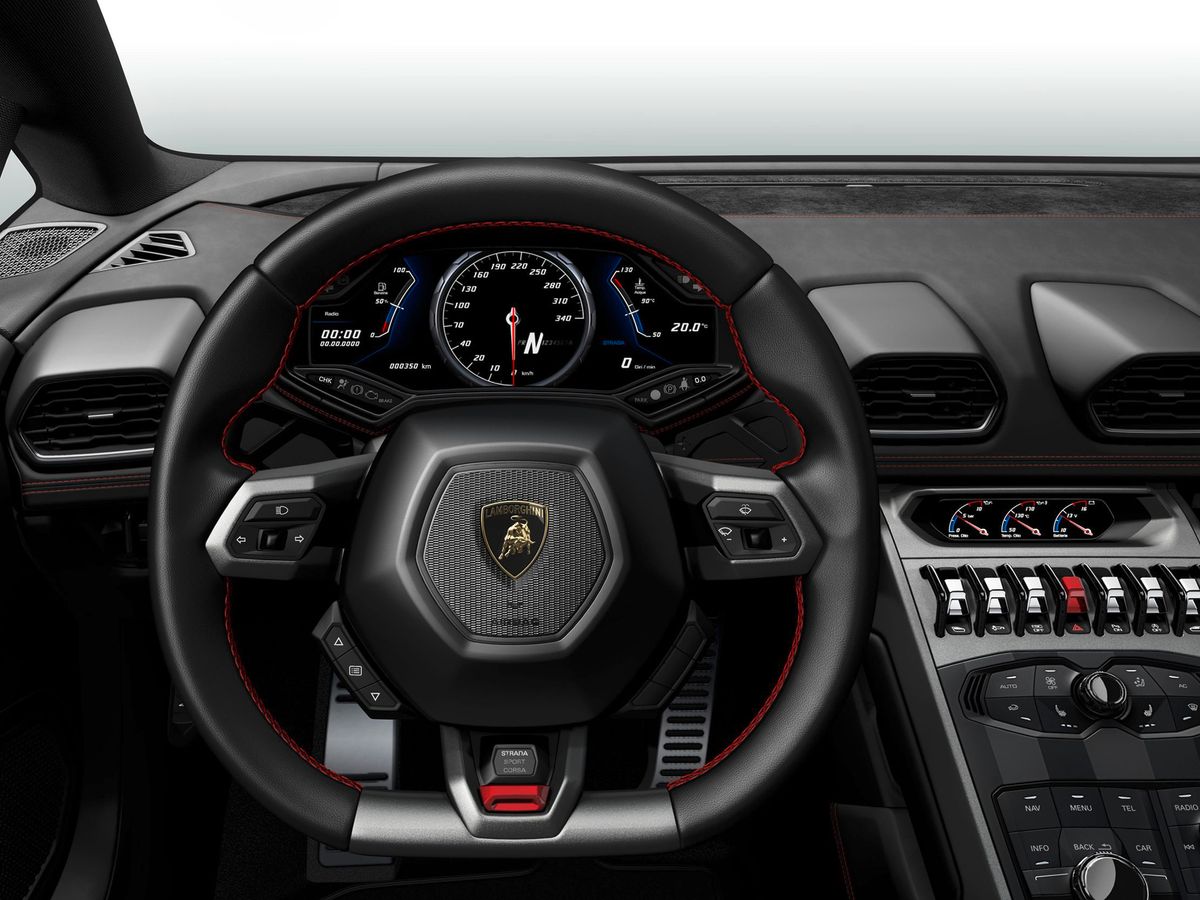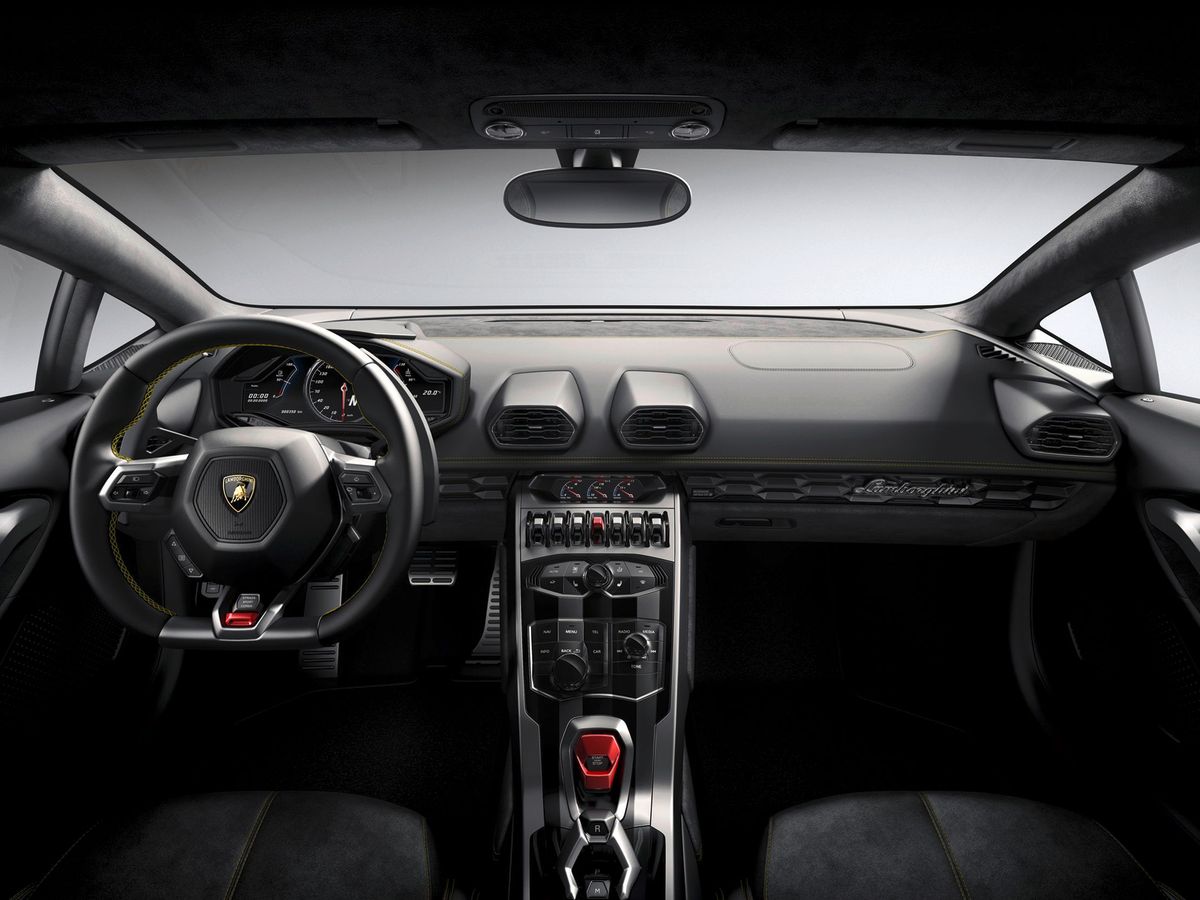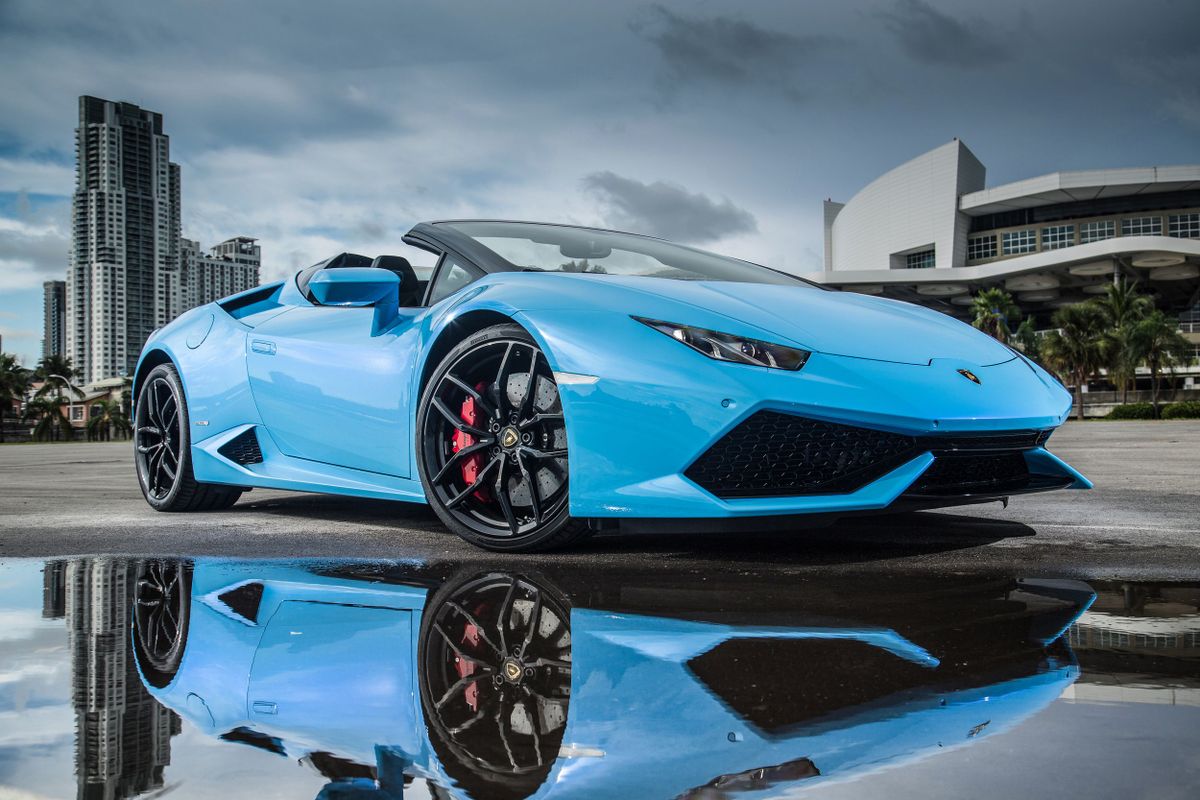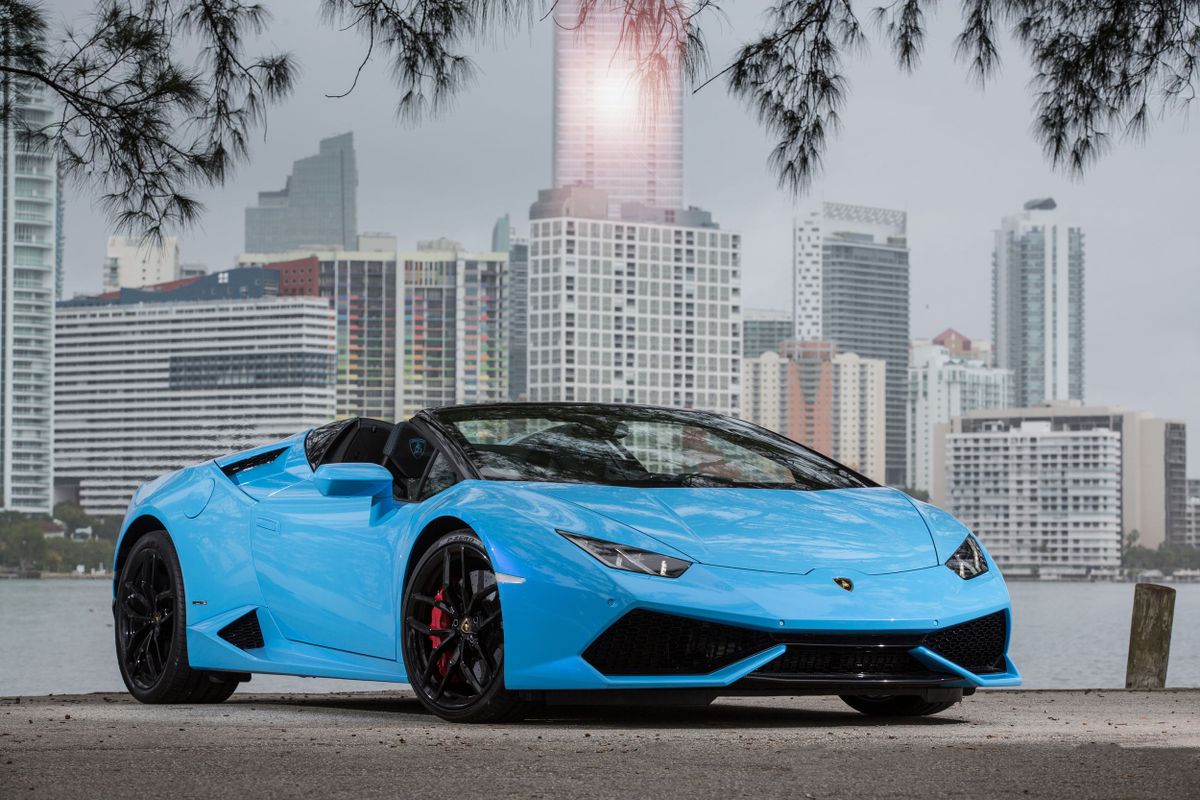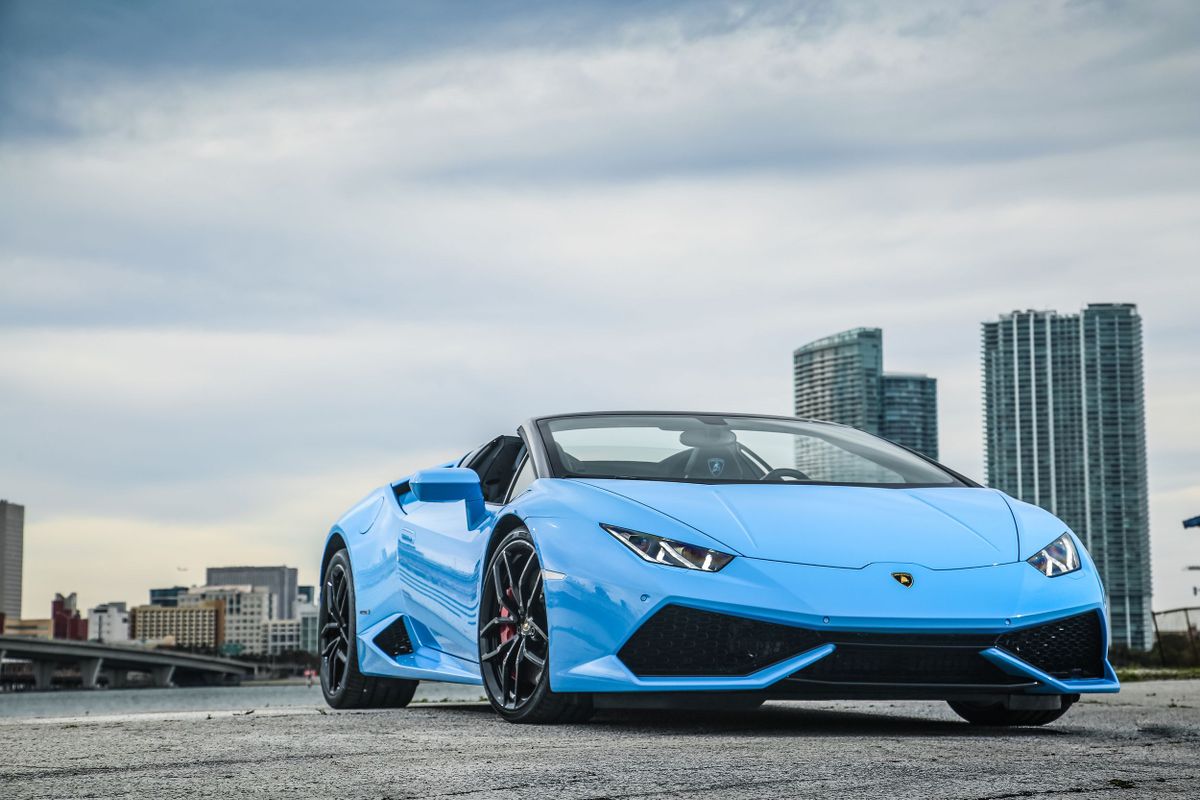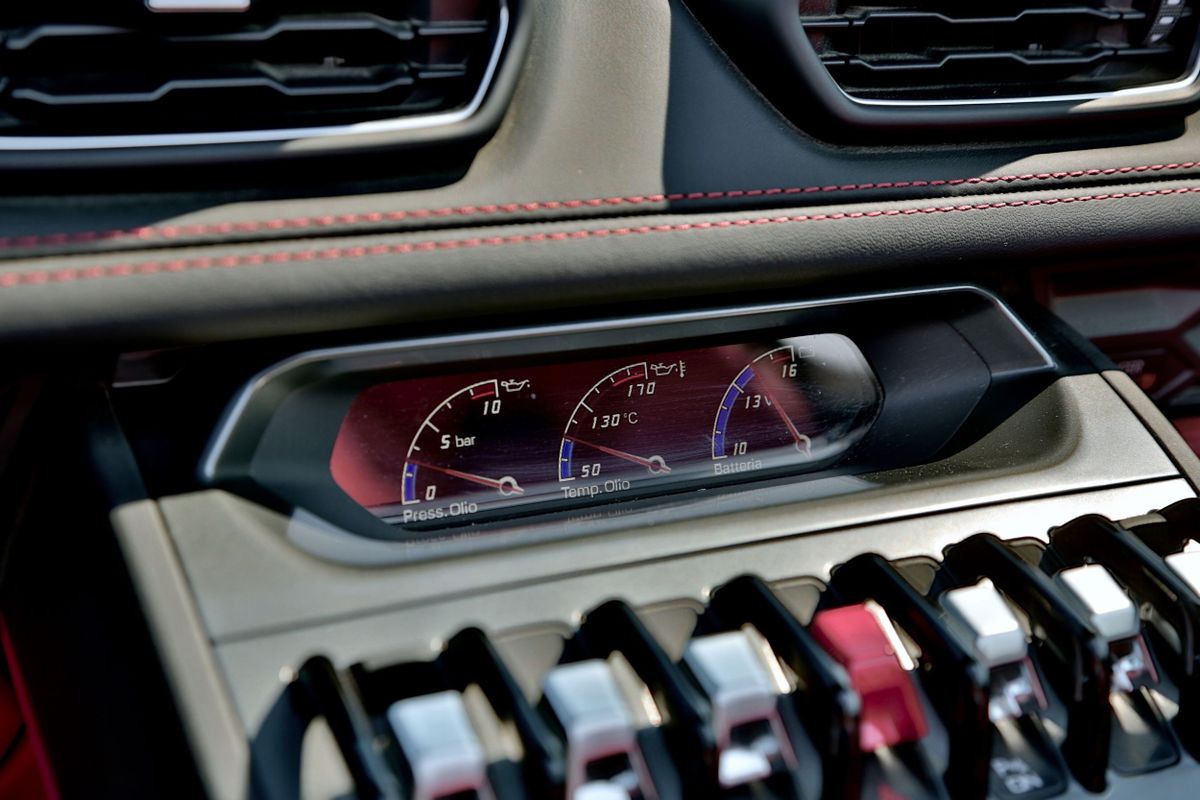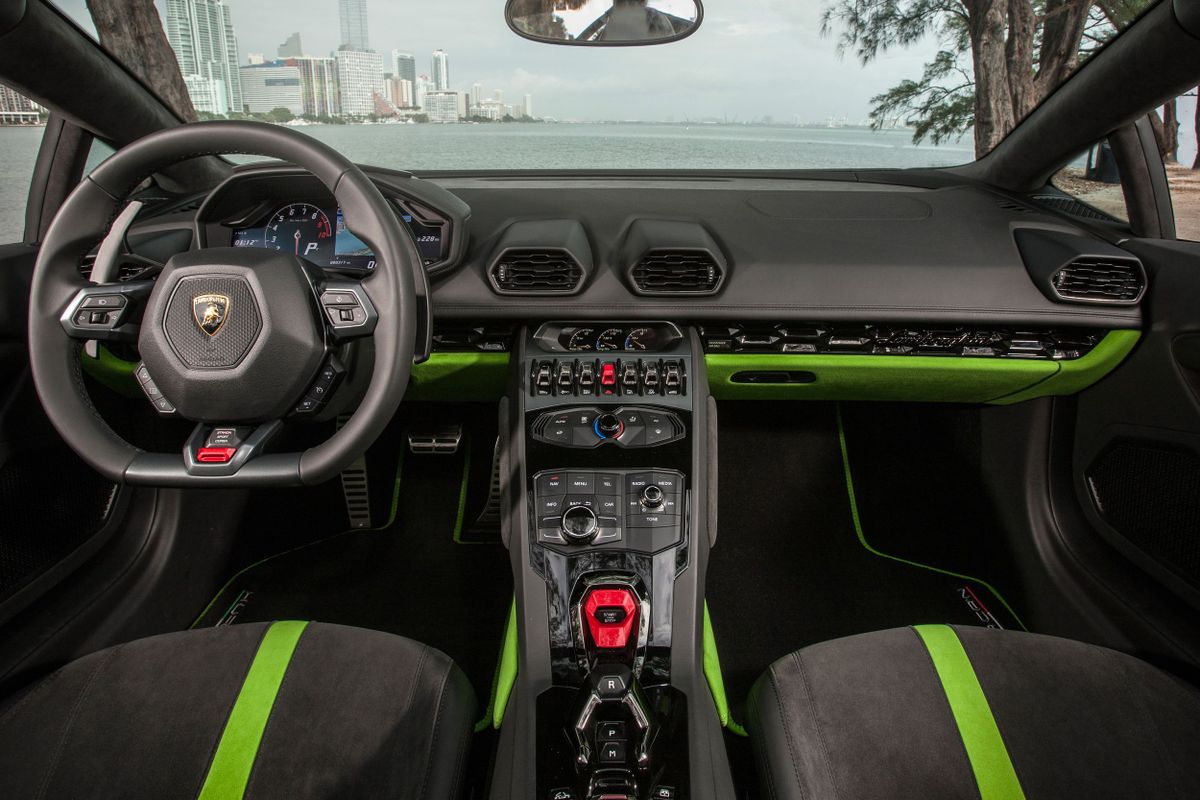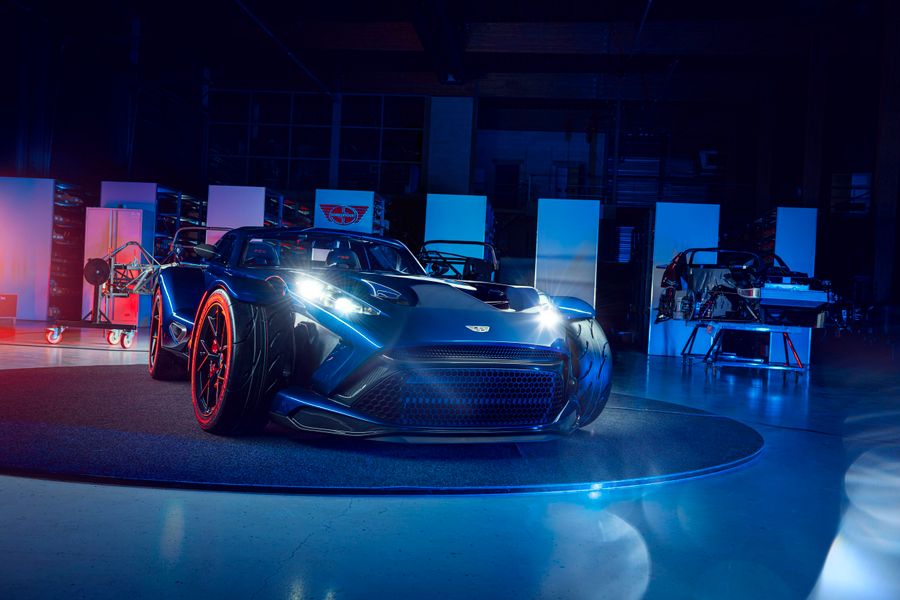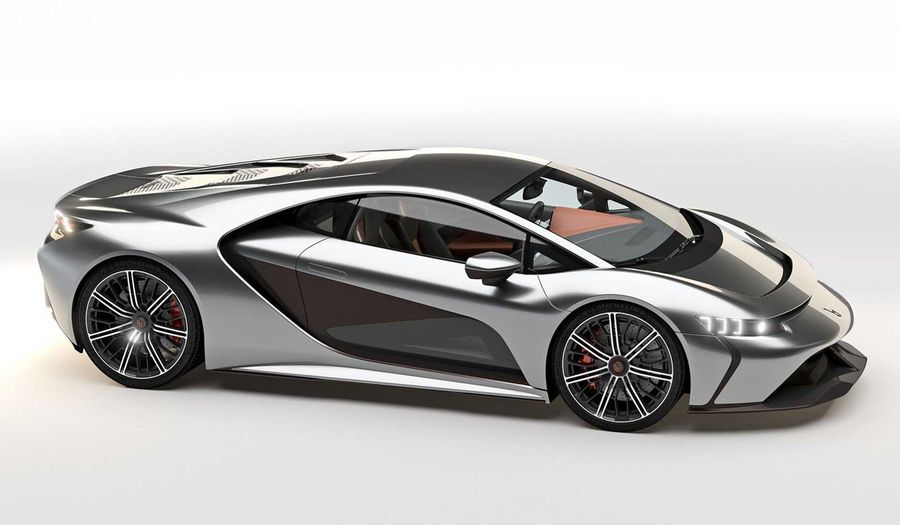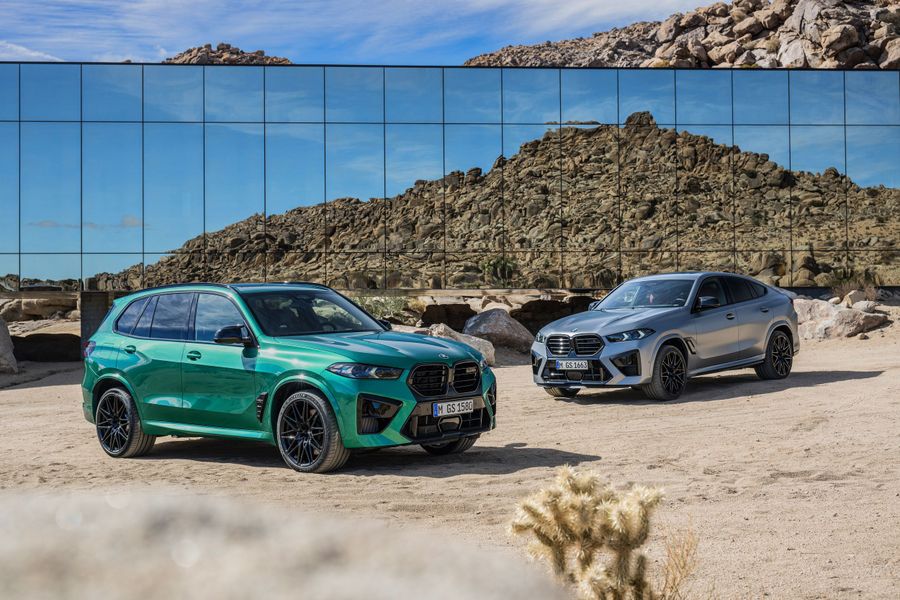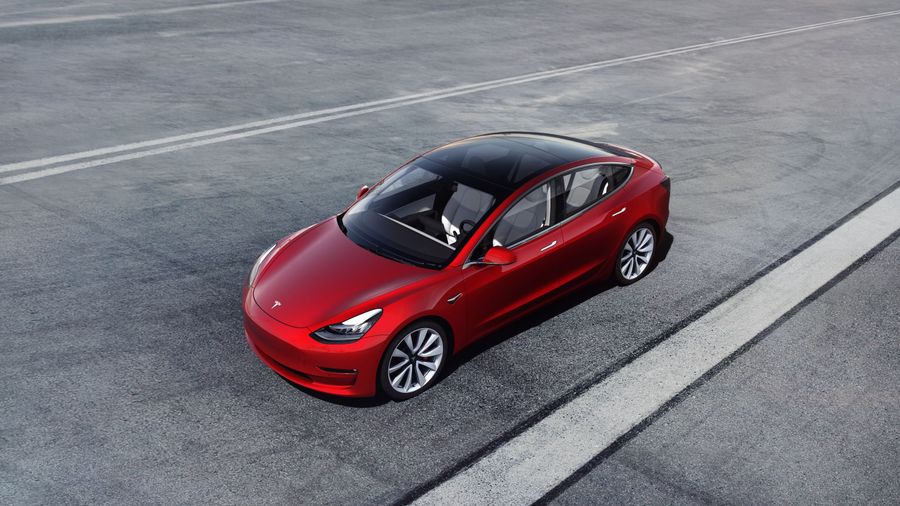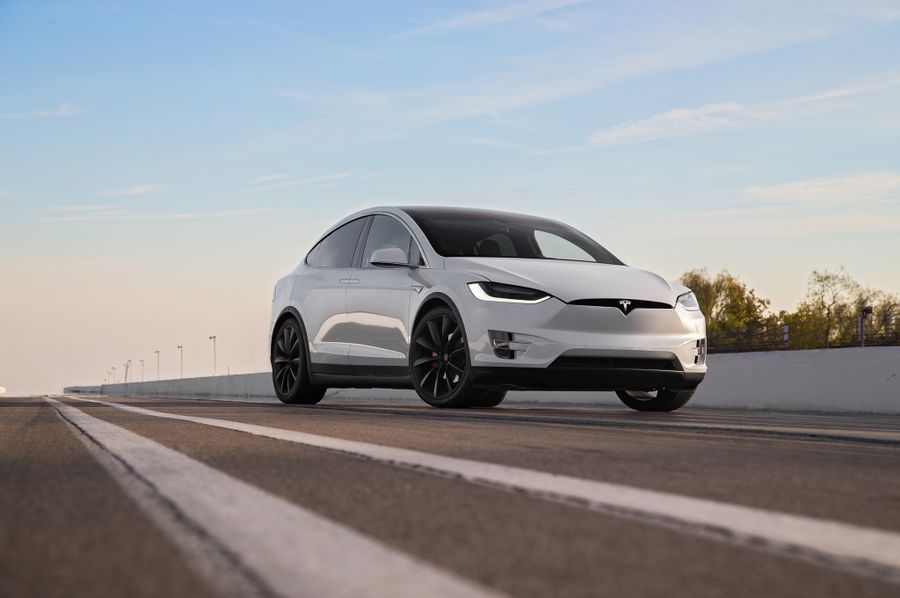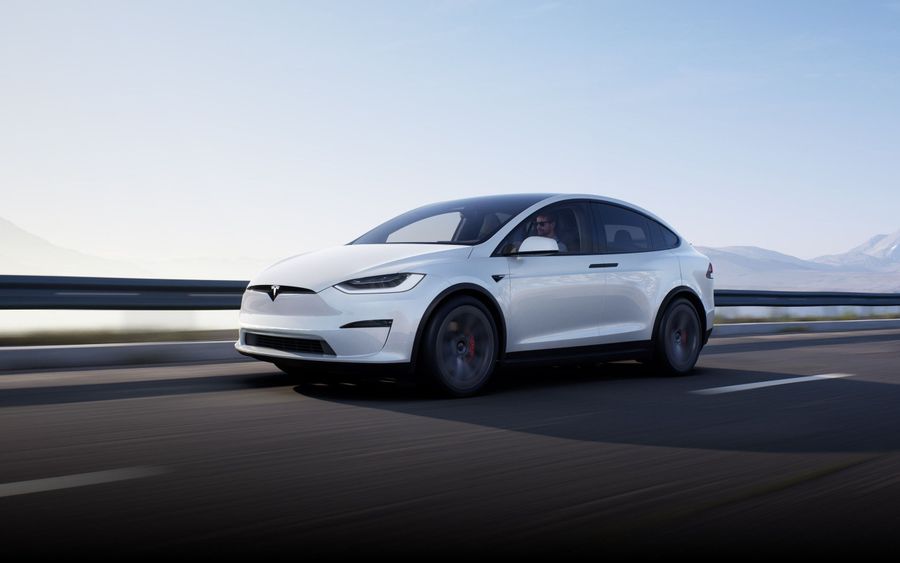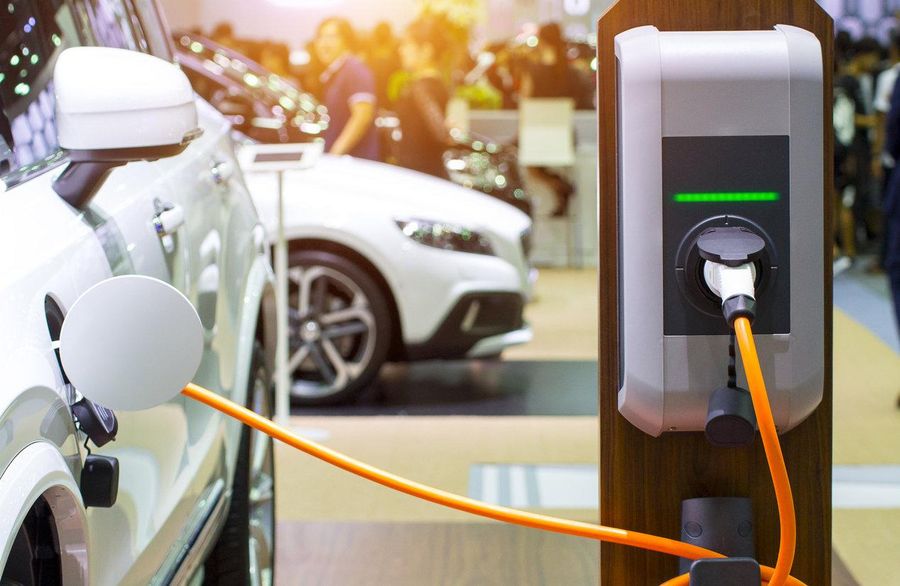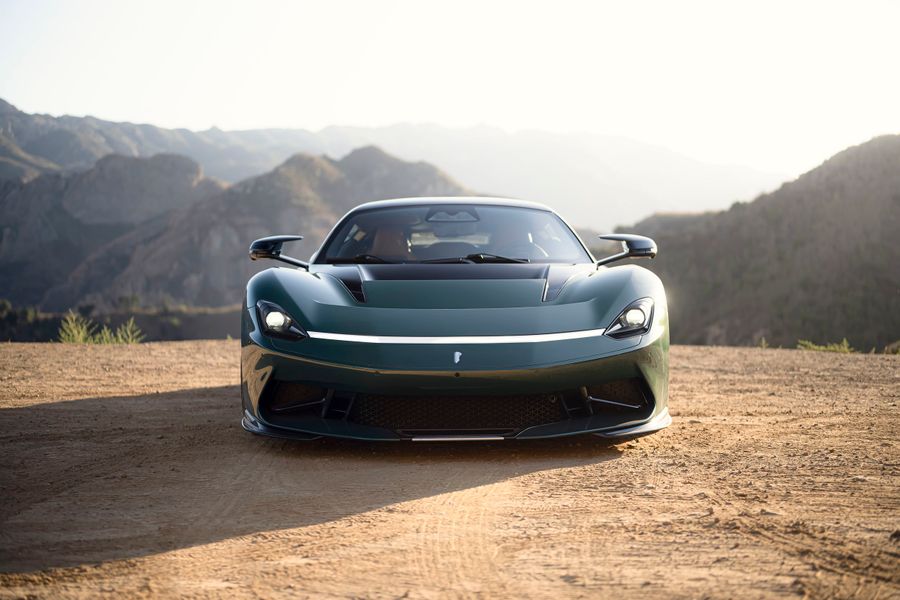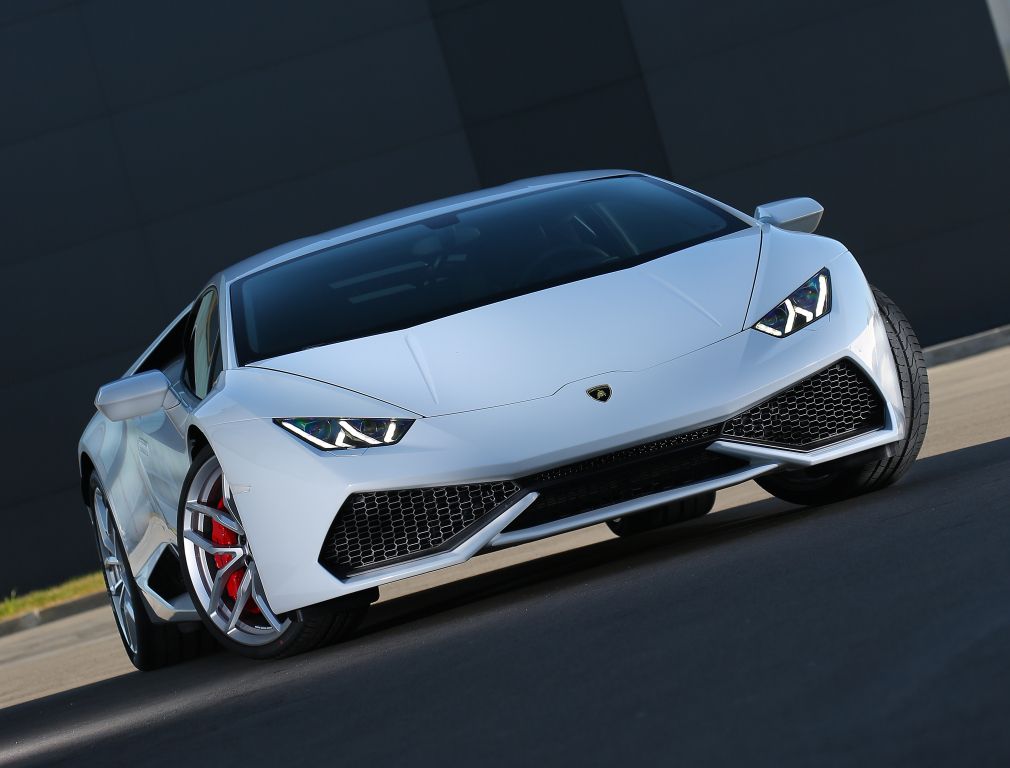
Life-changing hurricane
The Lamborghini Huracán is a supercar with a mid-engine, four-wheel drive layout, manufactured by Lamborghini (Italy) since 2014. It was unveiled at the Geneva Motor Show as a replacement for the Gallardo model. It comes as a coupe or a roadster. Huracán is the name of the Mayan god of wind. The same name was given to the fighting bull that participated in bullfights at the end of the 19th century. People from different parts of the world can easily recognize this word, since it sounds quite the same in many languages.
Lamborghini in movies
Cars of this brand have been featured in movies since 1969, when the famous Italian Job directed by Peter Collinson was released. In that movie, along with Michael Kane and Benny Hill, we can see a Miura P400 in the iconic orange color. The movie starts with a beautiful scene featuring the legendary sports car rushing along the snowy serpentine winding through the Saint-Bernard mountain pass to face a fabricated accident.
As for the Huracán, a gray coupe, which was so carelessly driven by the neurosurgeon Stephen Strange (played by Benedict Cumberbatch), comes immediately to mind. The movie is called Doctor Strange (2016), and the fact that a doctor can afford such a supercar speaks volumes about his skills. If the car was less dynamic and less demanding, the fate of the protagonist would not have changed so abruptly. Some episodes of Game Night, directed by John F. Daly and Jonathan M. Goldstein, 2016, feature the Huracán Spyder.
Structure
The Huracán is 4,459 mm long, 1,924 mm wide and 1,165/1,180 mm high (coupe/roadster), and has a wheelbase of 2,620 mm. Its ground clearance is only 135 mm. Low ground clearance, and most importantly, the mid-engine layout and 43% to 57% axle weight distribution, provide excellent handling and driving safety. The model shares its platform with the Audi R8, since the Lamborghini brand has been owned by the VAG since 2010.
The Lamborghini Huracán is equipped with a 5.2-liter 10-cylinder naturally-aspirated engine generating 610 hp at 8,250 rpm and 560 Nm of torque at 6,500 rpm. The dry weight of the model is 1,422 kg. In the future, the engine power was boosted to 640 hp. The car comes with a 7-speed LDF dual clutch transmission. Acceleration to 100 km/h occurs in 2.9 seconds. The maximum speed is 325 km/h.
Huracán is the name of the Mayan god of wind. The same name was given to the fighting bull that participated in bullfights at the end of the 19th century. People from different parts of the world can easily recognize this word, since it sounds quite the same in many languages.
The car is standardly equipped with powerful carbon-ceramic brakes. The sports car features active power steering with progressive characteristics and adaptive suspension with electronically controlled shock absorbers. Depending on the road situation and the selected operating mode of the control electronics, the system can select the ideal suspension stiffness separately for each wheel. Electronic stability control, integrated ABS and TCS come as standard.
Moreover, the Huracán is the first production vehicle in the world to use an inertial navigation system (LPI - Lamborghini Piattaforma Inerziale). Gyroscopic sensors and accelerometers allow for more accurate measurements of the car’s movement, thereby significantly increasing the quality of its handling.
Modifications
The new Huracán LP 580-2 was unveiled at the 2015 Los Angeles Auto Show. This model has a rear-wheel drive layout. Plus, the front bumper and rear diffuser have undergone minor external changes. Engine power was deliberately reduced from 610 hp to 580 hp. The weight of the car decreased by 33 kg, from 1,422 to 1,389 kg.
The top-end version of the Huracán was named Performante (2017). When creating it, engineers reassembled almost all the components of the existing car. The newcomer can be identified by a massive rear wing made of carbon fiber, as well as a redesigned front bumper, which makes it akin to the ‘older’ Aventador S. The supercar has also acquired a front splitter and a rear diffuser made of carbon fiber, and the round exhaust pipes have moved closer to the headlights. The interior features the Alcantara trim and a digital dashboard. The multimedia system supports Apple CarPlay. The model is equipped with a 5.2-liter V10 engine, boosted from 610 to 640 hp, while the peak torque has increased to 600 Nm. This is facilitated by an improved cooling system, a new intake manifold, an upgraded exhaust system and titanium valves. The car has become 40 kg lighter (up to 1,382).
A year later, the world premiere of the Huracán Performante Spyder open-top version took place in Geneva. The main difference from the coupe is the convertible top, which can be lifted in 17 seconds, even on the move, if the speed does not exceed 50 km/h. The Huracán Performante Spyder has the same technical equipment as the coupe.
The Lamborghini Huracán Evo has acquired a fully-controllable chassis: the rear wheels turn at a small angle, which contributes to improved maneuverability at low speeds and increased stability at high speeds.
In the spring of 2019, a new Lamborghini Huracán Evo was presented. It is equipped with the same V10 engine that produces 640 hp. The engine is paired with a seven-speed dual clutch transmission. This modification has better aerodynamics, a slightly different exterior design and more advanced equipment. The new Huracán Evo can be distinguished by its redesigned wheel rims and improved downforce. The interior is finished with a special leather and Alcantara trim with orange accents. There is also a chance to order carbon fiber inserts and ambient lighting. The center console now features an 8.4-inch touchscreen, which controls the climate system, seating settings, telemetry and other non-essential functions. The multimedia system has a large hard drive and supports Apple CarPlay. The Lamborghini Huracán Evo has acquired a fully-controllable chassis: the rear wheels turn at a small angle, which contributes to improved maneuverability at low speeds and increased stability at high speeds. The car comes with a Lamborghini Dinamica Veicolo Integrata (LDVI) system, the central processor of which controls an adaptive suspension with magnetorheological fluid in modified shock absorbers, a power unit and electronic stability control. There are three driving modes: Strada, Sport and Corsa.
A little later in 2019, the manufacturer presented the Lamborghini Huracán Evo Spyder with a fabric convertible top, which can be raised and folded in 17 seconds (it works even on the move, if the speed does not exceed 50 km/h). Thanks to the roof transformation mechanism, the roadster has become 120 kg heavier (1,542 kg) than the hard-top version. As a result, it takes the Evo Spyder 3.1 seconds to accelerate from 0 to 100 km/h, and 9.3 seconds up to 200 km/h (the previous version does this in 3.4 and 10.2 seconds, respectively), the maximum speed is 340 km/h. As for the rest, the car has undergone the same changes as the coupe.




